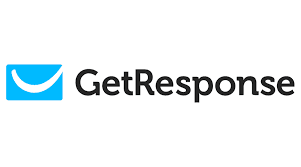Choosing the right landing page tool is like picking the perfect outfit for a big day. It has to be just right. Too complex, and you’ll be tangled in features you don’t need. Too simple, and you might miss out on that wow factor that captures leads. In the digital marketing wardrobe, Leadpages and GetResponse are two outfits you can’t ignore. But which one will make you shine? Whether you’re a small business owner, a digital marketing pro, or a solopreneur, finding the tool that fits you best can turn your online presence from drab to fab. Let’s unravel the threads of Leadpages and GetResponse to find your perfect fit.
| Leadpages | GetResponse |
|---|---|
 |  |
| G2 Score – 4.3 out of 5 stars | G2 Score – 4.2 out of 5 stars |
| TrustRadius Score – 7.9/10 | TrustRadius Score – 8.2/10 |
Ease of Use: The First Fitting
Leadpages: Designed for Simplicity
Leadpages is the go-to for those who value straightforwardness in design and functionality. Imagine walking into a room where everything is exactly where you expect it to be. That’s Leadpages. With its intuitive drag-and-drop interface, creating a landing page is as simple as picking and placing elements where you want them. You don’t need a manual to get started; it’s all very much “what you see is what you get.”
The platform is built with the user in mind, making it accessible to beginners while still offering the depth needed by more experienced marketers. Templates? Leadpages has them in spades. Whether you’re promoting a webinar, launching a product, or building your email list, there’s a template ready to go. And not just any templates, but ones designed for conversion, based on data from thousands of successful landing pages. This focus on simplicity and effectiveness makes Leadpages a strong contender for businesses looking to launch quickly and efficiently.
GetResponse: More Than a Landing Page Builder
GetResponse enters the scene with a slightly different approach. It’s not just a landing page tool; it’s a comprehensive marketing platform that includes email marketing, automation, webinars, and more. This means when you’re building landing pages with GetResponse, you’re not just creating a standalone page; you’re integrating it into a broader marketing strategy.
For newcomers, this integration can be a bit overwhelming, but GetResponse smooths out the learning curve with its user-friendly design. The drag-and-drop editor allows for easy customization of pages, and the platform offers a variety of templates to get you started. However, the true power of GetResponse lies in its ability to create a cohesive marketing campaign. From capturing leads on your landing page to nurturing them with automated email sequences, GetResponse offers a seamless transition that few other platforms can match.
Features and Functionality
The Toolbox at Your Disposal
When choosing between Leadpages and GetResponse, understanding the range of features each platform offers is crucial. It’s not just about creating a landing page; it’s about what you can do with that page and how it integrates with your overall marketing strategy. Let’s peel back the layers of features and functionality each tool provides.
Leadpages: Focused on Landing Pages and Conversions
Leadpages is laser-focused on helping you create landing pages that convert. Beyond its user-friendly design interface, it offers a suite of tools designed to maximize your conversion potential. A/B testing is a standout feature, allowing you to test different versions of your pages to see what resonates most with your audience. This data-driven approach to design and content can significantly increase your conversion rates.
Additionally, Leadpages integrates with a wide range of other tools and services, including email marketing platforms, payment processors, and CRM systems. This makes it easy to connect your landing pages to your existing marketing stack, creating a seamless flow of data and interactions from your pages to your other marketing channels.
Leadpages also offers unique features like Leadboxes (popup forms) and Leaddigits (text-to-join), which provide innovative ways to capture leads. These tools are particularly useful for businesses looking to engage their audience in different ways and capture leads across various touchpoints.
GetResponse: A Comprehensive Marketing Platform
While Leadpages shines in the realm of landing pages, GetResponse offers a broader set of marketing tools that extend well beyond the landing page. Its email marketing capabilities are robust, with advanced segmentation, personalization, and automation features that allow you to nurture leads effectively after they’ve landed on your page.
GetResponse also offers webinar hosting capabilities, a unique feature not commonly found in other landing page platforms. This integration allows you to not only capture leads through your landing pages but also engage them with live or recorded webinars, adding another layer to your marketing funnel.
Another powerful feature is the Autofunnel, now known as the Conversion Funnel. This tool guides you through the process of creating comprehensive marketing campaigns, from landing pages to email sequences and payment processing. It’s designed to take the guesswork out of creating effective online marketing campaigns, making it easier for businesses to convert leads into customers.

Related: Check out our free SEO suite

Integration Capabilities
The Connective Tissue of Your Marketing Stack
In today’s digital marketing ecosystem, the power of a tool is not just in its standalone features but also in how well it plays with others. Whether it’s email marketing platforms, CRM systems, analytics tools, or social media platforms, the best landing page tool should serve as a hub that connects various aspects of your marketing strategy.
Leadpages: A Hub for Diverse Tool Integration
Leadpages positions itself as a versatile player in the digital marketing field, acknowledging the varied landscapes of tools that different businesses might use. Its integration capabilities are designed to be as inclusive as possible, covering a wide spectrum from email marketing platforms to CRM systems, and payment processors to analytics tools. This inclusivity ensures that whatever your existing marketing stack looks like, Leadpages can likely slot in without causing disruptions.
The platform’s approach to integration is notable for its simplicity and user-friendliness. Setting up connections with other tools is often a matter of a few clicks, a process that Leadpages has streamlined to ensure that even those with minimal technical expertise can enhance their marketing workflows. This ease of integration extends to some of the most commonly used tools in digital marketing, such as Google Analytics for tracking page performance or Mailchimp for managing email lists, making Leadpages a central hub that brings various strands of your marketing strategy together.
Moreover, Leadpages doesn’t just stop at direct integrations. It also offers compatibility with Zapier, a tool that acts as a bridge between different apps and services. This compatibility significantly expands the range of potential integrations, opening up workflows that can automate processes across tools that might not directly connect with Leadpages. This level of flexibility is a testament to Leadpages’ commitment to fitting within diverse marketing ecosystems, making it a valuable asset for businesses looking to create a seamless flow between their landing pages and other marketing activities.
GetResponse: Streamlining Marketing with Built-In Integration
GetResponse approaches the integration challenge from a slightly different angle. By offering a suite of marketing tools within a single platform, it minimizes the need for external integrations. This all-in-one philosophy means that for many users, the essential tools for executing a comprehensive digital marketing strategy—from email marketing to automation and webinars—are already interconnected within the GetResponse ecosystem.
However, recognizing the reality that no platform can be an island unto itself, GetResponse also ensures that it can integrate smoothly with other critical tools in a marketer’s arsenal. Whether it’s connecting with e-commerce platforms like Shopify to enhance online sales or syncing with CRM systems like Salesforce to deepen customer relationships, GetResponse facilitates these connections to extend the power of its platform beyond its native capabilities.
The integration process within GetResponse is designed to be straightforward, acknowledging that the real power of a tool lies in its ability to enhance efficiency, not add complexity. This user-centric approach to integration reflects GetResponse’s understanding of the diverse needs of its users, catering to both those who appreciate the simplicity of an all-in-one solution and those who require the platform to play a specific role within a larger marketing strategy.
Pricing and Overall Value
Maximizing Your Marketing Budget
When it comes down to choosing a landing page tool, how much you pay versus what you get is a pivotal consideration. Both Leadpages and GetResponse offer various pricing tiers to cater to different needs, from basic functionalities for beginners to more advanced features for seasoned marketers. Let’s break down their pricing structures and evaluate the overall value they provide.
| Leadpages | Leadpages offers a range of pricing tiers starting with their Standard plan at approximately $37 per month when billed monthly, and $25 per month when billed annually. They also offer more advanced plans like the Pro plan, which typically costs around $79 per month when billed monthly, and $48 per month when billed annually, offering additional features such as A/B testing and online sales and payments. |
| GetResponse | GetResponse provides a tiered pricing structure that starts with the Basic plan at around $15 per month for up to 1,000 subscribers, offering unlimited landing pages, email marketing, and autoresponders. The Plus plan begins at $49 per month, and it adds automation builders, webinars, and contact scoring and tagging among other features. Pricing scales up with the number of subscribers and additional capabilities. |
Leadpages: Affordable and Transparent Pricing
Leadpages is known for its straightforward and transparent pricing structure, making it easy for businesses to choose a plan that fits their budget and needs. The platform offers several tiers, starting with a basic plan that covers all the essentials for creating and publishing landing pages. This entry-level option is particularly appealing for small businesses or individuals just starting with online marketing, as it provides access to unlimited landing pages, lead collection tools, and integration capabilities at a competitive price.
As you move up the pricing tiers, Leadpages includes additional features such as A/B testing, online sales and payments, and priority tech support. These higher-tier plans are still priced competitively, making Leadpages an attractive option for growing businesses looking to enhance their landing page strategies without a significant increase in cost.
One of the key value propositions of Leadpages is its focus on providing tools specifically designed for conversions, such as highly optimized templates and conversion tools, even at the lower pricing levels. This focus ensures that businesses of all sizes can maximize their ROI from the platform.
GetResponse: Comprehensive Marketing Solutions
GetResponse’s pricing model is a bit more complex, primarily because it offers a broader range of marketing tools beyond landing pages. The platform’s pricing is based on the size of your email list, which means that as your list grows, so does the cost of the service. This model can be advantageous for businesses that are just starting and have a smaller list but could become costlier as your marketing efforts scale up.
However, the value GetResponse offers extends beyond landing pages. Even at its basic tier, you get access to email marketing tools, automation, and the ability to create landing pages. Higher plans include more advanced features like webinar hosting, sales funnels, and ecommerce solutions, making GetResponse a versatile tool for businesses looking to manage multiple aspects of their online marketing from one platform.
For businesses that need an all-in-one marketing solution, GetResponse offers considerable value, integrating various marketing tools into a cohesive platform. This can potentially save costs and time compared to using separate tools for email marketing, landing pages, and automation.
Conclusion
Leadpages emerges as a formidable contender for those who prioritize ease of integration with a wide variety of tools, making it an ideal choice for businesses with an established marketing stack looking for a flexible, user-friendly landing page solution. Its strength lies in its adaptability, allowing it to become a central hub in your marketing ecosystem that enhances the capabilities of the tools you already use and rely on.
On the other side, GetResponse offers a compelling all-in-one solution that streamlines the marketing process for businesses looking to consolidate their tools into a single platform. With its built-in functionalities that span beyond landing pages to include email marketing, automation, and webinars, GetResponse stands out for businesses seeking a comprehensive marketing solution that can manage and execute campaigns from start to finish within one ecosystem.
Read Next:




















